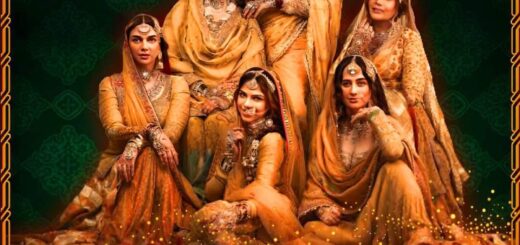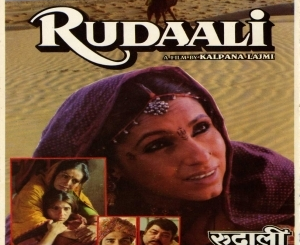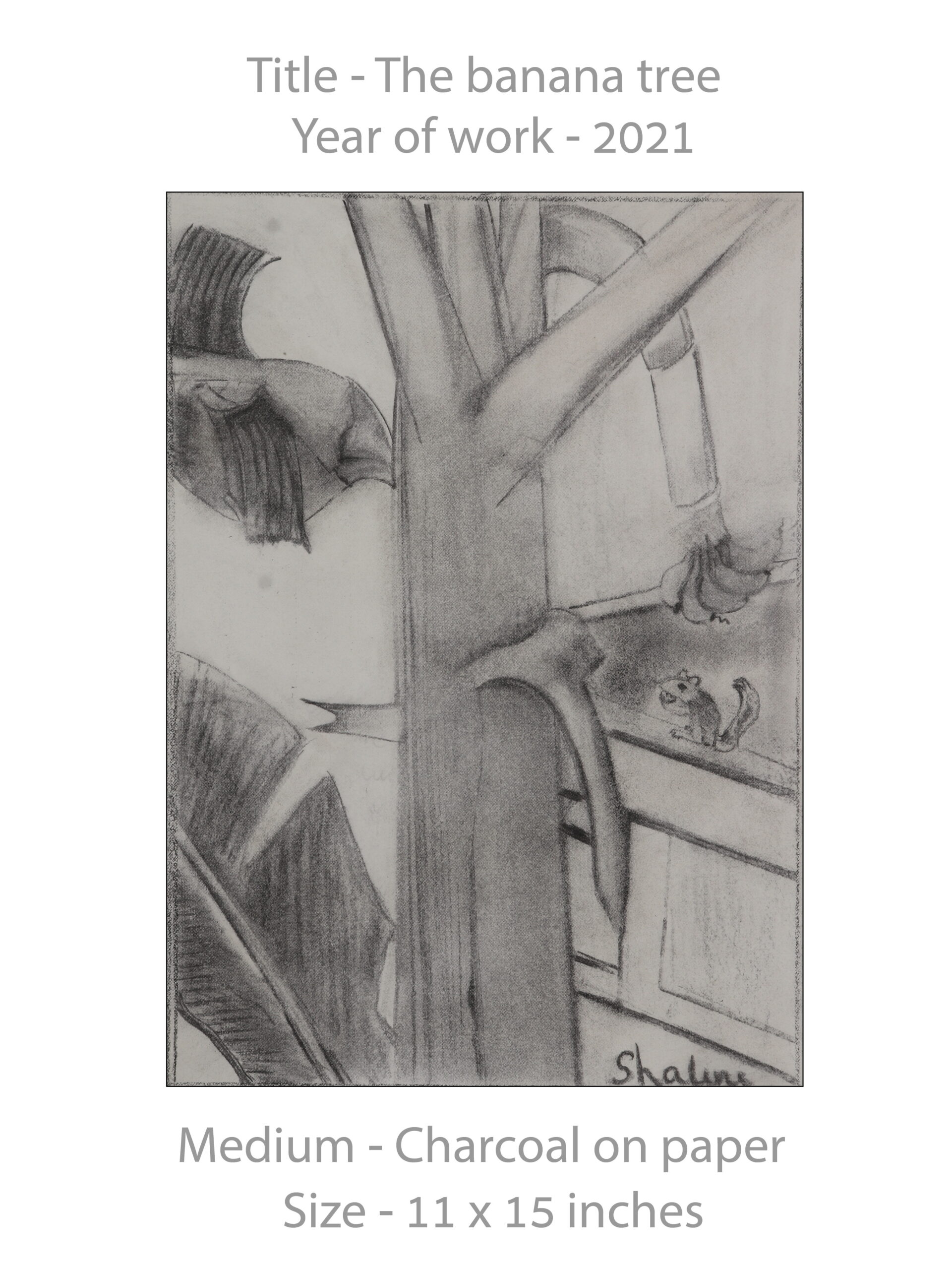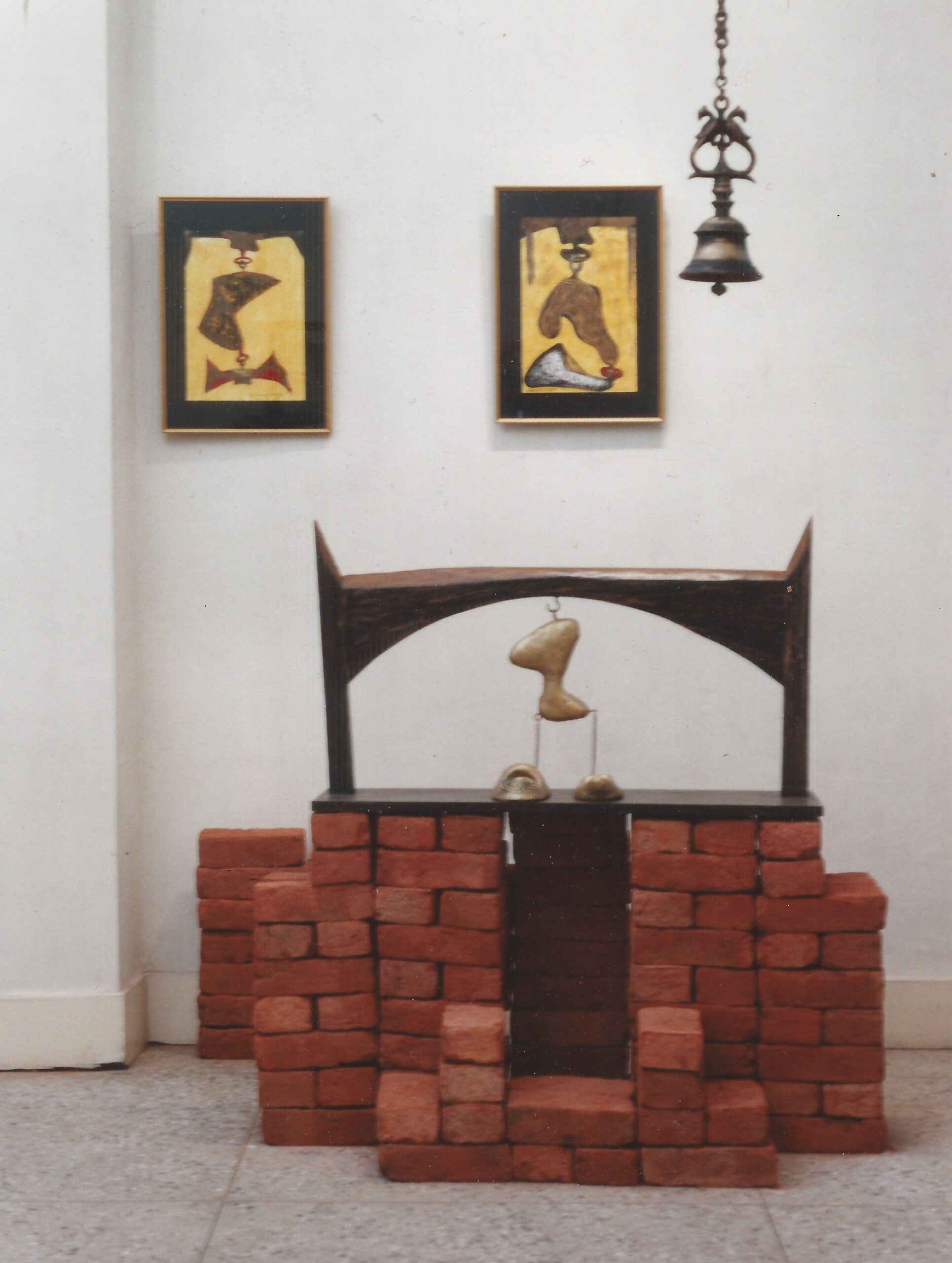Two Films: Devi and Subarnarekha and Two Masters of Cinema / Partha Chatterjee
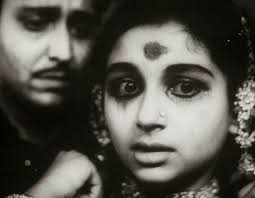
Satyajit Ray and Ritwik Ghatak were two masters from the Bengali cinema of the 1950s. They were temperamentally dissimilar and yet they shared a common cultural inheritance left behind by Rabindranath Tagore. An inheritance that was a judicious mix of tradition and modernity. Ray’s cinema, like his personality, was outwardly sophisticated but with deep roots in his own culture, particularly that of the reformist Brahmo Samaj founded by Raja Ram Mohan Roy to challenge the bigotry of the upper caste Hindu Society in Bengal in the early and mid-nineteenth century. Ghatak’s rugged, home-spun exterior hid an innate sophistication that found a synthesis in the deep-rooted Vaishnav culture of Bengal and the teachings of western philosophers like Hegel, Engels and Marx.
Satyajit Ray’s Debi (1960) was made with the intention of examining the disintegration of a late 19th century Bengali Zamidar family whose patriarch (played powerfully by Chabi Biswas) very foolishly believes that his student son’s teenaged wife (Sharmila Tagore) is blessed by the Mother Goddess (Durga and Kali) so as able to cure people suffering from various ailments. The son (Soumitra Chatterjee) is a good-hearted, ineffectual son of a rich father. He is in and out of his ancestral house because he is a student in Calcutta, a city that symbolizes a modern, scientific (read British) approach to life.
The daughter-in-law named Doyamoyee, ironically in retrospect, for she is victimized by her vain, ignorant father-in-law, as it to justify the generous, giving quality suggested by her name. After a few “successes”, Doyamoyee fails tragically to cure her brother-in-law’s infant son, who dies because he is denied proper medical treatment by his demented grandfather driven solely by religion. Doyamoyee goes mad and dies tragically having hovered in the twilight of self-deception and rationality. Her loving husband makes a dash from Calcutta but arrives too late to help avert the tragedy. Her father-in-law’s conviction that she was Devi or Goddess remains firm.
Ray’s sense of mise-en-scene or literally what he puts in a particular scene, is vigorous, classical. The way he links each scene to tell his story that moves forward inevitably towards its tragic finish with the surety of a well-aimed arrow, is an object lesson in film craft. His pace is unhurried and yet the editing carries the film forward by giving maximum importance to the content of individual scenes.
The impact of Doyamoyee’s first appearance on-screen made up as a Devi, and also like a bride with sandal paste dots just above either eye-brow curving downwards and a large Kumkum bindi, offset by Sharmila Tagore’s innocent, liquid eyes, is simultaneously a touching as well as disturbing sign. One realizes the importance of this close-up much after leaving the film theatre. It foretells the sending of a lamb to slaughter, although one’s initial reaction to the image is one of admiration bordering on Bhakti. Dulal Dutta’s editing, Ray’s direction of a fledgling actress and Subrata Mitra’s immaculate lensing and approximation of daylight together help create magic.
Ray’s visual style is beautiful because it is also understated. Every shot has an organic quality that helps in the unfolding of the narrative, giving it shape, tone, clarity and sensitivity. His camera draws the viewer in as a witness to the happenings that coelesce into a moving story about power arising, ironically, from a lack of knowledge and the certitude that blind faith brings to an economically powerful man who is then free to wreck havoc even on his loved ones with the best of intentions.
Ali Akbar Khan’s spare music, helps enunciate the sense of loss that the film carries. He had by then become aware of the need to say more with less in composing background music for cinema.
Khan Saheb, the great Sarod maestro had composed music earlier in Hindi films for Aandhiyaan and Anjali. His composing skills were not particularly tested except for a raga Mallika based-song sung by Lata Mangeskar for Aandhiyaan. His peerless solo sarod carried Anjali. He was a little jittery when asked to compose the music for Ritwik Ghatak’s Ajaantrik.
His score for this film revolved largely around his moving rendition of raga Bilaskhani Todi on the Sarod. There were other interesting bits played by Bahadur Khan (Sarod) and Nikhil Banerjee (Sitar). But here in Debi, he seemed to have intuitively grasped the core idea of the film. He uses a simple Shyama Sangeet dedicated to Goddess Kali as a leit motif both as a vocal rendering and as an astonishingly eloquent Sarod Solo. He also uses another Shyama Sangeet as a counter point. The end result is remarkable. It is amongst the very few truly memorable background scores in Indian films.
Subrata Mitra’s Black and White photography helps express Ray’s innermost thoughts with precision. His lyrical vision blends with that of the director and includes a genuine sense of the tragic. The slow disintegration of Doyamoyee’s mind is photographed with unusual understanding. Mitra was to Ray what cinematographer Sven Nykvist was to Ingmar Bergman in Swedish cinema. It is difficult to forget the images of the last quarter of the film.
The idyllic view of a river in the countryside with two boats in either corner of the frame, in early morning light, just before the return of the young husband from Calcutta in a futile bid to save his young bride’s life, is the perfect visual prelude to the onset of the final tragedy that is soon to occur. Doyamoyee’s flight from her father-in-law’s house with her husband in pursuit through crop-laden fields and her ultimate death amidst enveloping, ever brightening light is a triumph of B/W cinematography.
Satyajit Ray’s transformation of Prabhat Kumar Mukherjee’s competently told tale into a film of abiding value is worth cherishing. His little touches are worthy of emulation by younger filmmakers travelling on the same path. The way he inverses the role of the maternal figure when the ailing baby is placed on Doyamogee’s lap is an object lesson in filmmaking.
She is only a very young woman who has “Sainthood” thrust upon her by a superstitious, overbearing father-in-law. Her own potential for motherhood is kept on hold as she is willed by others to become a “Divine Mother” to cure the diseases from which that they may be suffering.
Ray’s treatment of the film brings to mind that unique constituent of the Indian psyche which seeks solutions to all worldly problems including the cure of disease through supernatural intervention rather than rationality and science. This attitude is also largely responsible for the choice of political leaders and the exercise of choices, both social and political.
If you want to see the film here is a link to Devi:
https://youtu.be/ittYCEV4nUY
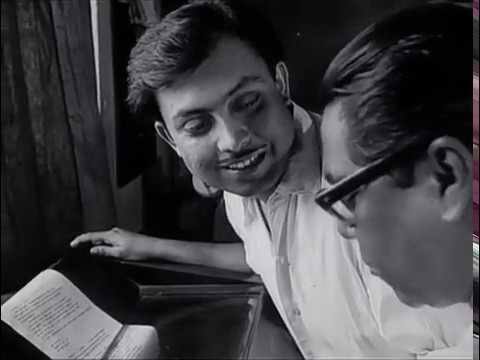
Ritwik Ghatak’s Subarnrekha
Ritwik Ghatak’s Subranarekha (1962) is a far cry from the world of Maya (illusion) and blind faith. It is rooted in the sufferings of daily life engendered by wholly avoidable political events. The protagonists are victims of the senseless partition of India in 1947. They have been uprooted from their native East Bengal and have come to a Suburb of Calcutta in Independent India.
Life is a relentless struggle for Ishwar Bhattacharya (Abhi Bhattacharya), his little sister Sita (Madhabi Mukherjee) and foster brother Abhiram (Satindra Bhattacharjee) as it is for the other members of the Refugee camp. Ishwar is befriended by a school master, Harprasad (Bijon Bhattacharya). A chance meeting in the street with an old friend, a marwari, lands Ishwar a job in his foundry near the river Subarnarekha in Bihar. Harprasad accuses Ishwar of being a coward and seeking security only for his family and forgetting his suffering comrades in the camp. The rest of the story, or rather its unfolding would do credit to Bertold Brecht, who, despite his intractable stand against the bourgeoisie, had imbibed vital lessons from medieval Christian morality plays.
Ishwar and his little family find stability thanks to his job. Sita grows up to be a beautiful, musically gifted woman and Abhiram, a writer of promise. Inevitably they fall in love and marry against the wishes of Ishwar, Sita’s blood brother and also a father-figure in her life. They elope to Calcutta. Sita, after a few years of marriage becomes a widow. Ishwar, with his life, in a shambles, is rescued by the Sanskrit-toting, indigent school master, Harprasad. Sita, with a little son to feed, makes her debut as a singing courtesan for her drunken elder brother Ishwar: Recognising him she commits suicide. What follows is a most moving, perceptive rendering of the sufferings of the displaced in the 20th century and their chimeral aspirations to stability.
The film was shot on a day to day basis as there was only the skeletal plot of a long-lost brother and sister meeting as client and singing prostitute provided by producer Radhe Shyam Jhunjhunwala. Ghatak literally had to work his story in both directions without the knowledge of his producer who was expecting an entirely different, perhaps hugely sensational film. This story is true because Ghatak had to do “Scissors”, his only Advertising film, courtesy his friend Chidananda Dasgupta, then with Imperial Tobacco Company. The proceeds from this cigarette Ad film went to do the final post-production work on Subarnarekha when producer Jhunjhunwala fled in panic.
Ghatak’s cinematographic vocabulary, was no doubt, enriched by disparate sources. Literature, Bengali, Sanskrit and European had a part to play as did his own considerable literary efforts; he was a Bengali short-story writer of high promise when only in his middle-twenties. Music, both Hindustani classical and Folk including Vaishnav Kirtans, Bhatialis, Bhawaiyyas, Baul songs and other forms helped shape his sensibilities. Cinematically he owed almost nothing to Hollywood but had learnt from films by the Soviet masters like Eisenstein and Dovzhenko the art of editing and dramatic shot-taking. His poetically charged depiction of the passage of time was uniquely his own.
He understood instinctively that cinema and music were sister-arts and that both, more than anything else portrayed the passage of time. His handling of cinematic time was both dynamic and lyrical.
Ghatak knew all about the malleability of time in cinema to arrive at what may be a truth, which in turn opens many doors of perception in the viewer . His handling of time in Subarnarekha, is on the surface linear but, in truth, is also very interestingly elliptical.
There is a magnificent example of a scene in a deserted airport where Sita and Abhiram are playing on a Second World War airstrip. Sita tells Abhiram that the British pilots would bomb Japanese positions in Burma and then come back to enjoy themselves in the Air force Mess after the mission. A few moments after, the children start imitating the take-off of an aircraft, the Camera suddenly “becomes” airborne. The sound track makes the illusion all the more real. This scene is a symbolic projection of Sita and Abhiram’s future dreams.
Similarly the adult Sita singing a bandish in raga Kalavati on the same deserted airstrip where she played with Abhiram as children, is full of grief and foreboding because her elder brother is certainly going to reject the idea of her marrying Abhiram, her foster brother, who, on a railway platform discovers by sheer chance his dying “low-cast” biological mother.
There is another scene when, after the elopement of Sita and Abhiram, the assistant manager of the foundary starts reading out from a Bengali newspaper about Yuri Gagarin’s space flight. Ishwar snatches the paper out of the man’s hand and throws it into the foundry as if making a comment, unknown to himself, on the ineptitude of human beings at managing their affairs on Earth.
It is a film of startling transitions. When Ishwar weary of life alone, some years after the departure of Sita and Abhiram, decides to hang himself his old friend Harprasad appears like a ghost at the window and declares “How far gone is the night? There is no answer”. Ishwar’s suicide is averted and the two friends after a brief conversation end up in the morning on the same deserted airstrip where Sita and Abhiram played as children. Near the wreckage of a WWII Dakota airplane Harbilash tells Ishwar that both as individuals and as a generation they are finished. He suggests to the relatively monied Ishwar that they go to Calcutta to have a good time.
In Calcutta they go to the race-course to bet on horses and in a sharply photographed and edited sequence the two friends discover the joy of life which further continues in a Park Street restaurant over dinner and far too many drinks. Not for nothing is “Patricia” from Fredrico Fellini’s La Dolce Vita heard on the sound track. This piece of music is used as a poignant, ironic comment on the state of affairs of two lost souls floundering about in a pitiless world. At one point in the sequence, Harprasad tells his friend, “only what you can touch is true. The rest is bogus.” This revelation from one of the Upanishads is also an apt comment for Ghatak’s time and ours.
The next scene is the one where a drunken Ishwar lands up in a sleepy Sita’s humble home to hear her sing without knowing who she is. Now a widow, she, sleepy from hunger and poverty, recognizes him in an instant and kills herself with the curved blade of a bonti, used for cutting vegetables, fish etc. The choice of a bonti on Ghatak’s part is intuitive but it is connected with cooking food and therefore economics!
When Ishwar returns back to his job as Foundry manager on the banks of the river Subarnarekha (also meaning the ‘Golden Line’) with little Binu, the son of the deceased Sita and Abhiram, he finds that he has been fired. The scandalous case resulting from Sita’s suicide is cited as the reason for his dismissal. Undaunted Ishwar and his little Nephew Binu set out seeking new horizons accompanied by a hauntingly sung ‘Charai Beti’ mantra on the sound track. Very few films in the history of cinema have had such a moving ending.
Ghatak’s use of music in Subarnarekha is exemplary. He uses Bahadur Khan, Ali Akbar Khan’s cousin, and the most lyrical Sarodist in Hindustani music, as music director. Bahadur Khan’s theme music subtly emphasizes the illusion suggested by the title of the film. It is one of the most sophisticated and telling background scores in the history of cinema, vying with Joseph Kosma’s exquisite work in Jean Renoir’s A Day in the Country.
Ghatak’s use of wide-angle lenses, particularly the problematic 18.5 mm, indoors and outdoors is an act of great daring. He places his characters in their environment and uses natural and artificial light to reveal their states of mind assisted by his unusual lensing. His jagged editing and carefully selected incidental sound adds to the aural richness and augments the film’s mood.
Ritwik Ghatak’s Subarnarekha is one of the most beautiful and disturbing films about people fighting their destiny bestowed upon them by an unforgivable quirk of history; in this case the partition of India, which had the largest single displacement of human population ever.
If you are excited enough to want to see Subarnarekha you can see it right away on this link:
https://youtu.be/0Qyml5vqvqo



